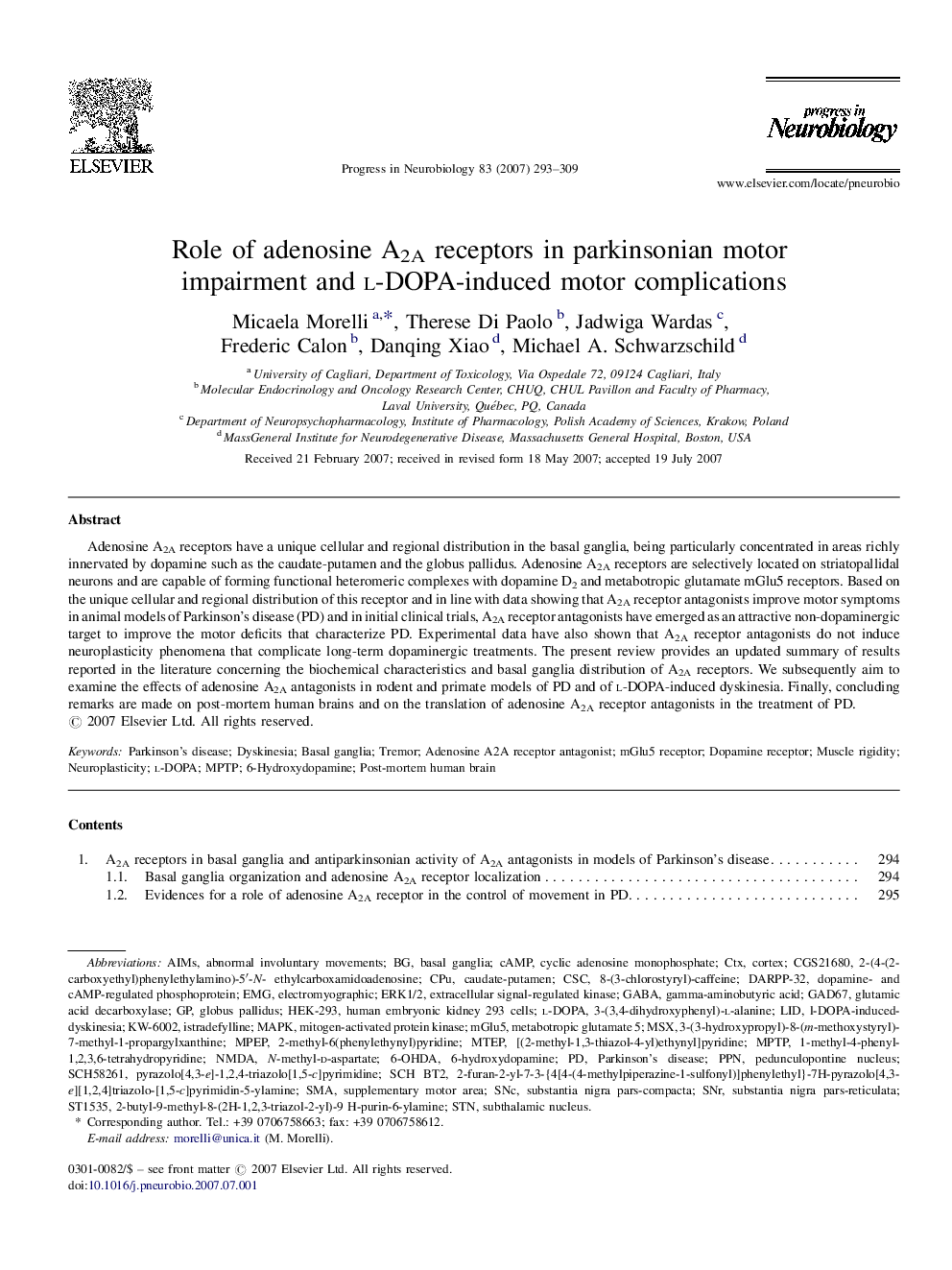| Article ID | Journal | Published Year | Pages | File Type |
|---|---|---|---|---|
| 4353838 | Progress in Neurobiology | 2007 | 17 Pages |
Adenosine A2A receptors have a unique cellular and regional distribution in the basal ganglia, being particularly concentrated in areas richly innervated by dopamine such as the caudate-putamen and the globus pallidus. Adenosine A2A receptors are selectively located on striatopallidal neurons and are capable of forming functional heteromeric complexes with dopamine D2 and metabotropic glutamate mGlu5 receptors. Based on the unique cellular and regional distribution of this receptor and in line with data showing that A2A receptor antagonists improve motor symptoms in animal models of Parkinson's disease (PD) and in initial clinical trials, A2A receptor antagonists have emerged as an attractive non-dopaminergic target to improve the motor deficits that characterize PD. Experimental data have also shown that A2A receptor antagonists do not induce neuroplasticity phenomena that complicate long-term dopaminergic treatments. The present review provides an updated summary of results reported in the literature concerning the biochemical characteristics and basal ganglia distribution of A2A receptors. We subsequently aim to examine the effects of adenosine A2A antagonists in rodent and primate models of PD and of l-DOPA-induced dyskinesia. Finally, concluding remarks are made on post-mortem human brains and on the translation of adenosine A2A receptor antagonists in the treatment of PD.
